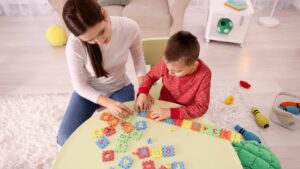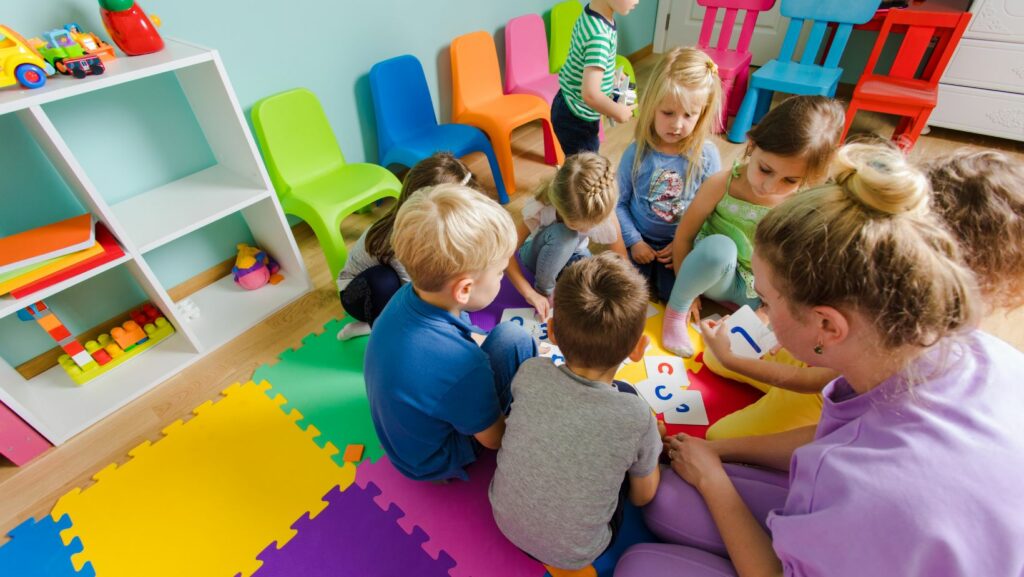Preschoolers are a bundle of energy, aren’t they? Keeping them engaged, entertained, and educated can often feel like a Herculean task. However, with the right set of activities, you can transform your home into a fun and effective learning environment.
This article is a treasure trove of preschool activities that you can easily set up at home. From craft projects that spark creativity, to science experiments that ignite curiosity, it’s all about making learning fun and engaging. Stay tuned as we dive into the world of hands-on learning, right in the comfort of your living room.
Preschool Activities At Home
 Preschool activities at home offer a plethora of possibilities for growth and learning. In this space of comfort and familiarity, children pick up vital skills, and families foster deeper bonds.
Preschool activities at home offer a plethora of possibilities for growth and learning. In this space of comfort and familiarity, children pick up vital skills, and families foster deeper bonds.
Engaging in home-based preschool activities affords several developmental advantages for children. Firstly, cognitive development blossoms during activities that nurture problem-solving or logical thinking skills, such as puzzles or counting games.
Secondly, creative expressions flourish during crafts or painting sessions, enhancing artistic abilities and fine motor skills. A simple Origami project, for instance, couples manual dexterity with creativity, offering hands-on lessons in shapes, symmetry, and spatial reasoning.
Lastly, social and emotional development also finds an opportunity to thrive within the safe confines of home. Take a role-play activity, where children impersonate different characters and professions. It’s an ideal way to teach empathy, expression of emotions, and even some basic life skills.
Exploring Different Types of Preschool Activities at Home
 Beneficial for young learners, home-based preschool activities stimulate the development of core cognitive, creative, and social-emotional skills. This growth is achieved through a variety of playful experiences that engage children and their families, strengthening familial bonds and cultivating a nurtured sense of belonging.
Beneficial for young learners, home-based preschool activities stimulate the development of core cognitive, creative, and social-emotional skills. This growth is achieved through a variety of playful experiences that engage children and their families, strengthening familial bonds and cultivating a nurtured sense of belonging.
Imaginative play, an intrinsic aspect of preschooler development, nurtures creativity and social skills. Home-based activities, such as role-playing or puppet shows, provide a safe space for children to express their thoughts and feelings. In this expressive process, they enhance their ability to empathize with others, fostering both emotional intelligence and conflict-resolution abilities. A simple instance of a child pretending to be a firefighter doesn’t just make for an entertaining afternoon; it’s also a wonderful exercise in problem-solving and empathy, as the child imagines saving others from danger.Arts and crafts activities serve dual purposes at home. First, they are an outlet for a child’s creativity, allowing for the manifestation of thoughts and ideas in physical form.
How to Plan and Execute Preschool Activities at Home
To create an ideal at-home preschool environment, proper planning and execution skills play pivotal roles. Here, we’ll explore procedures to infuse structure, choose fitting activities and incorporate fun in learning at home.
 Crafting a well-organized schedule assists in making the learning process smooth, maintaining a balance between academic and fun activities for the child. Begin by designating a specific area in the house as an ‘Education Zone’. This perspective helps the child associate that region with learning. Setting regular time slots for different activities, like arts, imaginative play, or science experiments, imparts a sense of routine, ensuring the child isn’t overwhelmed.
Crafting a well-organized schedule assists in making the learning process smooth, maintaining a balance between academic and fun activities for the child. Begin by designating a specific area in the house as an ‘Education Zone’. This perspective helps the child associate that region with learning. Setting regular time slots for different activities, like arts, imaginative play, or science experiments, imparts a sense of routine, ensuring the child isn’t overwhelmed.
It’s clear that preschool activities at home can be a dynamic and enriching experience. From imaginative play to STEM-focused tasks, there’s a world of opportunities to foster cognitive, creative, social, and emotional development. By planning effectively and tailoring activities to the child’s interests, parents can turn their homes into interactive learning environments. It’s all about striking a balance between play and learning, using both digital and physical resources. Even with challenges such as maintaining attention and limited resources, strategies like short engaging tasks and creative use of household items can make preschool activities at home a success. Remember, technology is a tool that can enhance the learning experience, but it’s crucial to set healthy screen time limits. So, let’s embrace the adventure of preschool activities at home, and watch as our little ones grow and learn in this nurturing and stimulating environment.



